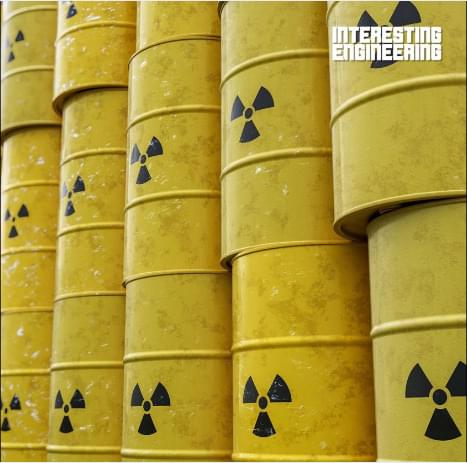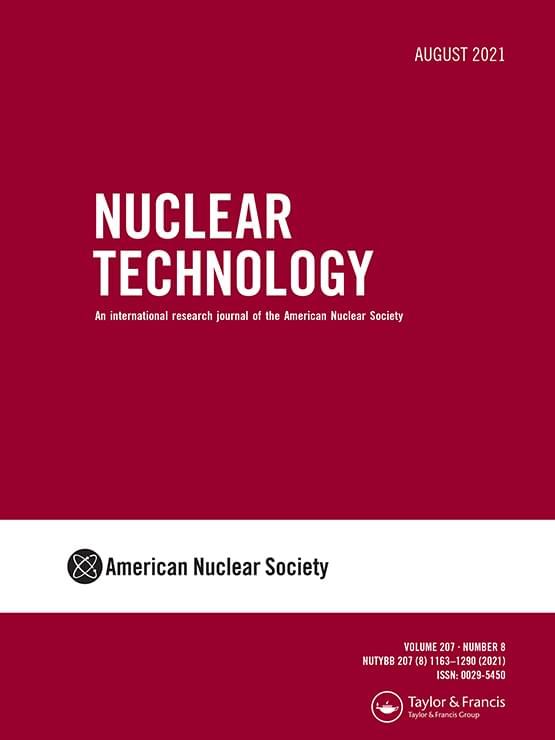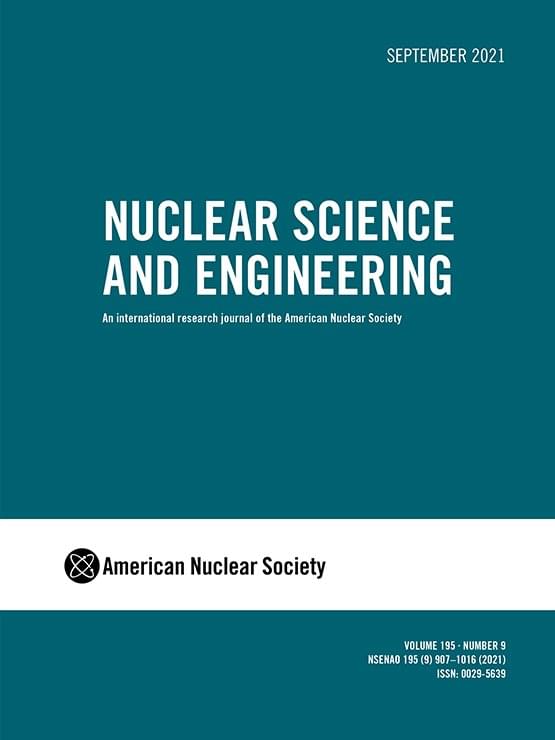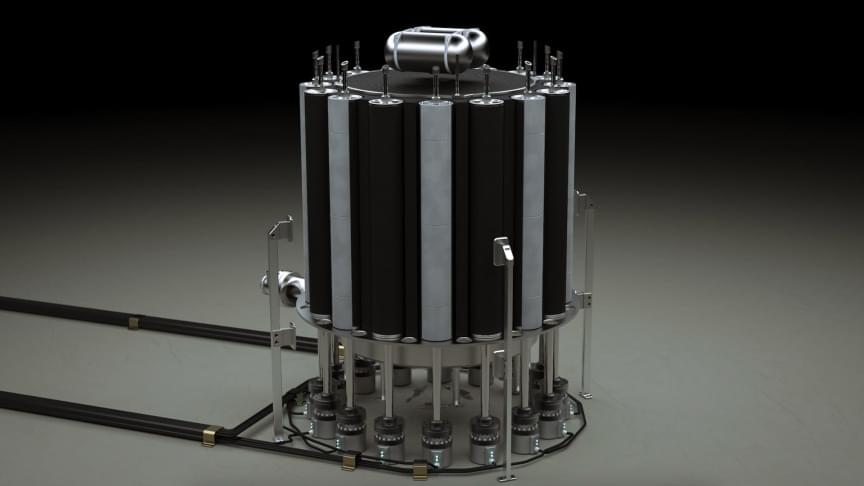But how? ⚛ 🛢



(2021). Nuclear Technology: Vol. 207 No. 8 pp. 1163–1181.
Focusing on nuclear engineering applications, the nation’s leading cybersecurity programs are focused on developing digital solutions to support reactor control for both on-site and remote operation. Many of the advanced reactor technologies currently under development by the nuclear industry, such as small modular reactors, microreactors, etc., require secure architectures for instrumentation, control, modeling, and simulation in order to meet their goals. 1 Thus, there is a strong need to develop communication solutions to enable secure function of advanced control strategies and to allow for an expanded use of data for operational decision making. This is important not only to avoid malicious attack scenarios focused on inflicting physical damage but also covert attacks designed to introduce minor process manipulation for economic gain. 2
These high-level goals necessitate many important functionalities, e.g., developing measures of trustworthiness of the code and simulation results against unauthorized access; developing measures of scientific confidence in the simulation results by carefully propagating and identifying dominant sources of uncertainties and by early detection of software crashes; and developing strategies to minimize the computational resources in terms of memory usage, storage requirements, and CPU time. By introducing these functionalities, the computers are subservient to the programmers. The existing predictive modeling philosophy has generally been reliant on the ability of the programmer to detect intrusion via specific instructions to tell the computer how to detect intrusion, keep log files to track code changes, limit access via perimeter defenses to ensure no unauthorized access, etc.
The last decade has witnessed a huge and impressive development of artificial intelligence (AI) algorithms in many scientific disciplines, which have promoted many computational scientists to explore how they can be embedded into predictive modeling applications. The reality, however, is that AI, premised since its inception on emulating human intelligence, is still very far from realizing its goal. Any human-emulating intelligence must be able to achieve two key tasks: the ability to store experiences and the ability to recall and process these experiences at will. Many of the existing AI advances have primarily focused on the latter goal and have accomplished efficient and intelligent data processing. Researchers on adversarial AI have shown over the past decade that any AI technique could be misled if presented with the wrong data. 3 Hence, this paper focuses on introducing a novel predictive paradigm, referred to as covert cognizance, or C2 for short, designed to enable predictive models to develop a secure incorruptible memory of their execution, representing the first key requirement for a human-emulating intelligence. This memory, or self-cognizance, is key for a predictive model to be effective and resilient in both adversarial and nonadversarial settings. In our context, “memory” does not imply the dynamic or static memory allocated for a software execution; instead, it is a collective record of all its execution characteristics, including run-time information, the output generated in each run, the local variables rendered by each subroutine, etc.

(2021). Nuclear Science and Engineering: Vol. 195 No. 9 pp. 977–989.
Earlier work has demonstrated the theoretical development of covert OT defenses and their application to representative control problems in a nuclear reactor. Given their ability to store information in the system nonobservable space using one-time-pad randomization techniques, the new C2 modeling paradigm6 has emerged allowing the system to build memory or self-awareness about its past and current state. The idea is to store information using randomized mathematical operators about one system subcomponent, e.g., the reactor core inlet and exit temperature, into the nonobservable space of another subcomponent, e.g., the water level in a steam generator, creating an incorruptible record of the system state. If the attackers attempt to falsify the sensor data in an attempt to send the system along an undesirable trajectory, they will have to learn all the inserted signatures across the various system subcomponents and the C2 embedding process.
We posit that this is extremely unlikely given the huge size of the nonobservable space for most complex systems, and the use of randomized techniques for signature insertion, rendering a level of security that matches the Vernam-Cipher gold standard. The Vernam Cipher, commonly known as a one-time pad, is a cipher that encrypts a message using a random key (pad) and can only be decrypted using this key. Its strength is derived from Shannon’s notion of perfect secrecy 8 and requires the key to be truly random and nonreusable (one time). To demonstrate this, this paper will validate the implementation of C2 using sophisticated AI tools such as long short-term memory (LSTM) neural networks 9 and the generative adversarial learning [generative adversarial networks (GANs)] framework, 10 both using a supervised learning setting, i.e., by assuming that the AI training phase can distinguish between original data and the data containing the embedded signatures. While this is an unlikely scenario, it is assumed to demonstrate the resilience of the C2 signatures to discovery by AI techniques.
The paper is organized as follows. Section II provides a brief summary of existing passive and active OT defenses against various types of data deception attacks, followed by an overview of the C2 modeling paradigm in Sec. III. Section IV formulates the problem statement of the C2 implementation in a generalized control system and identifies the key criteria of zero impact and zero observability. Section V implements a rendition of the C2 approach in a representative nuclear reactor model and highlights the goal of the paper, i.e., to validate the implementation using sophisticated AI tools. It also provides a rationale behind the chosen AI framework. Last, Sec. VI summarizes the validation results of the C2 implementation and discusses several extensions to the work.

Nuclear power is going portable in the form of relatively lightweight, cost-effective microreactors. A team of former SpaceX engineers is developing the “world’s first portable, zero-emissions power source” that can bring power to remote areas and also allows for quick installation of new units in populated areas, a press statement revealed.
Last year, the team secured $1.2 million in funding from angel investors for their startup Radiant to help develop its portable nuclear microreactors, which are aimed at both commercial and military applications.
Could combining solar panels plus farming be a viable solution to the growing demand for food production and energy demand? Let’s take a closer look at electrifying our crops (not literally electrifying crops) … well, adding solar to our farm land as well as some of the side benefits and challenges it creates.
Watch 28,000 Year Nuclear Waste Battery? Diamond Batteries Explained.
Video script and citations:
https://undecidedmf.com/episodes/solar-panels-plus-farming-a…-explained.
Follow-up podcast:
Video version — https://www.youtube.com/channel/UC4-aWB84Bupf5hxGqrwYqLA
Audio version — http://bit.ly/stilltbdfm.
Special thanks to BayWa and GroenLeven for some of the video footage and photography.

It sounds like a scene from a spy thriller. An attacker gets through the IT defenses of a nuclear power plant and feeds it fake, realistic data, tricking its computer systems and personnel into thinking operations are normal. The attacker then disrupts the function of key plant machinery, causing it to misperform or break down. By the time system operators realize they’ve been duped, it’s too late, with catastrophic results.
The scenario isn’t fictional; it happened in 2,010 when the Stuxnet virus was used to damage nuclear centrifuges in Iran. And as ransomware and other cyberattacks around the world increase, system operators worry more about these sophisticated “false data injection” strikes. In the wrong hands, the computer models and data analytics—based on artificial intelligence—that ensure smooth operation of today’s electric grids, manufacturing facilities, and power plants could be turned against themselves.
Purdue University’s Hany Abdel-Khalik has come up with a powerful response: To make the computer models that run these cyberphysical systems both self-aware and self-healing. Using the background noise within these systems’ data streams, Abdel-Khalik and his students embed invisible, ever-changing, one-time-use signals that turn passive components into active watchers. Even if an attacker is armed with a perfect duplicate of a system’s model, any attempt to introduce falsified data will be immediately detected and rejected by the system itself, requiring no human response.
“The twisted coils are the most expensive and complicated part of the stellarator and have to be manufactured to very great precision in a very complicated form,” physicist Per Helander, head of the Stellarator Theory Division at Max Planck and lead author of the new paper, told Princeton Plasma Physics Laboratory News.
The new design offers a simpler approach by instead using permanent magnets, whose magnetic field is generated by the internal structure of the material itself. As described in an article published by Nature, Zarnstorff realized that neodymium–boron permanent magnets—which behave like refrigerator magnets, only stronger—had become powerful enough to potentially help control the plasma in stellarators.
Advanced Nuclear Power Advocacy For Humanity — Eric G. Meyer, Founder & Director, Generation Atomic
Eric G. Meyer is the Founder and Director of Generation Atomic (https://generationatomic.org/), a nuclear advocacy non-profit which he founded after hearing about the promise of advanced nuclear reactors, and he decided to devote his life to saving and expanding the use of atomic energy.
Eric worked as an organizer on several political, union, and issue campaigns while in graduate school for applied public policy, taking time off to attend the climate talks in Paris and sing opera about atomic energy.
Eric began his full time nuclear work in May of 2016 with Environmental Progress by organizing marches, rallies, and trainings in California, New York, and Illinois, before leaving to found Generation Atomic in late 2016.
In only a short period of time, Generation Atomic has made significant progress in the world of nuclear advocacy. Over the last year they’ve held several advocacy trainings at conferences, Marched for Science, talked to over tens of thousands voters, and carried the banner for nuclear energy at the climate talks in Morocco, Germany, and Poland.
While wind turbine and solar power platforms are beginning to take to the sea, another, more established form of power might also avoid hiking real estate costs.
A Copenhagen-based startup just raised funding to the sum of eight figures in Euros to begin construction of a new kind of cheap, flexible, portable, and unyieldingly safe nuclear reactor, according to a press release shared by the company, Seaborg Technologies.
And, crucially, the timeline for global deployment will shatter conventional paradigms in the energy industry.
Claim your SPECIAL OFFER for MagellanTV here: https://try.magellantv.com/sabinehossenfelder. Start your free trial TODAY so you can watch The Story of Energy about how super-important energy is to human civilization, and the rest of MagellanTV’s science collection: https://www.magellantv.com/series/order-and-disorder-the-for…-energy-4k.
How close is nuclear fusion to break-even? If you trust the headlines we’re getting close and the international project ITER is going to be the first to produce energy from fusion power. But not so fast. Scientists have, accidentally or deliberately, come to use a very misleading quantity to measure their progress. Unfortunately we’re much farther away from generating fusion power than the headlines suggest.
Phillip Ball’s article in the Guardian is here:
https://www.theguardian.com/environment/2019/oct/27/nuclear-…is-johnson.
The one in Science Magazine is here:
https://www.science.org/lookup/doi/10.1126/science.350.6264.